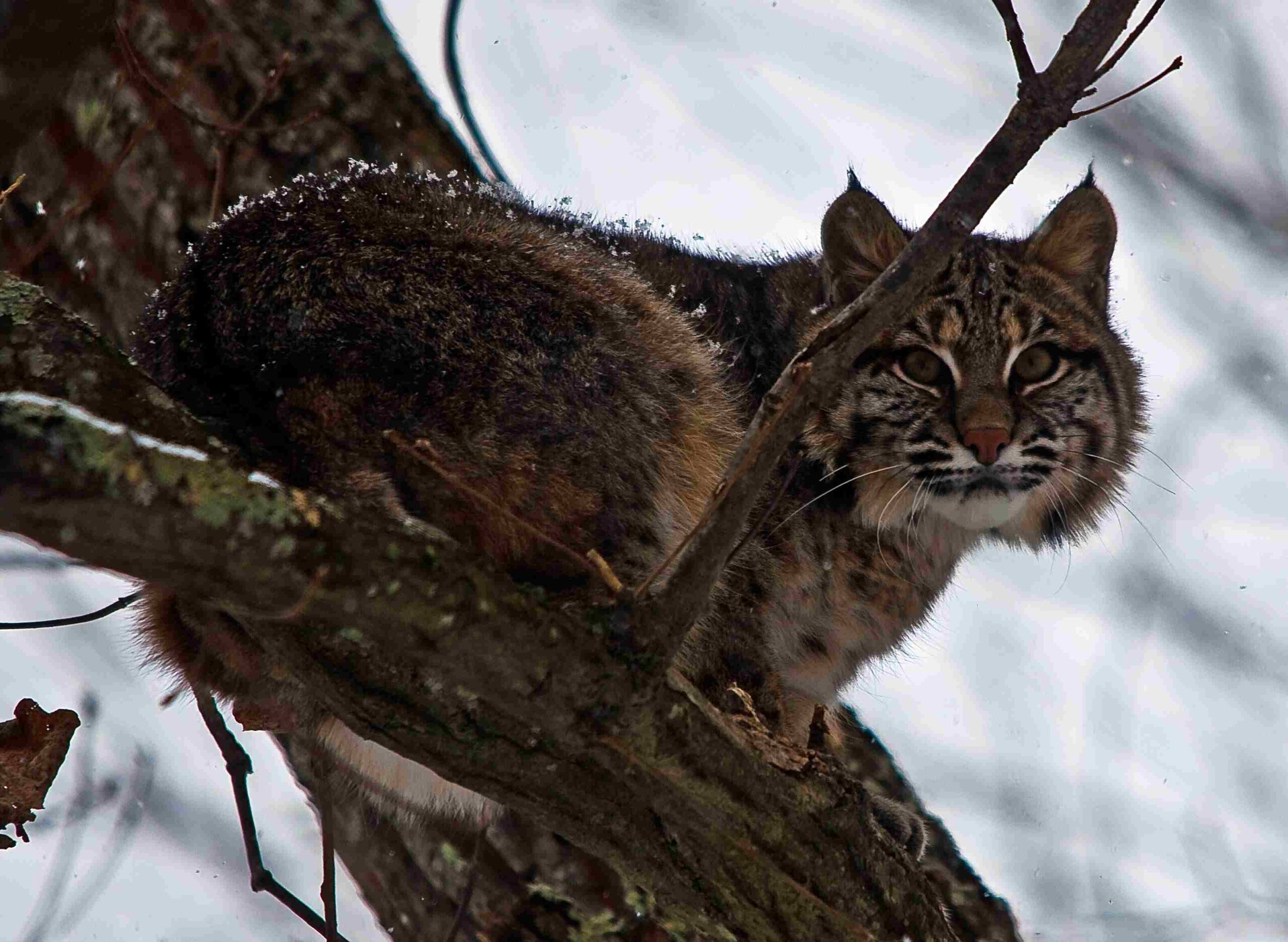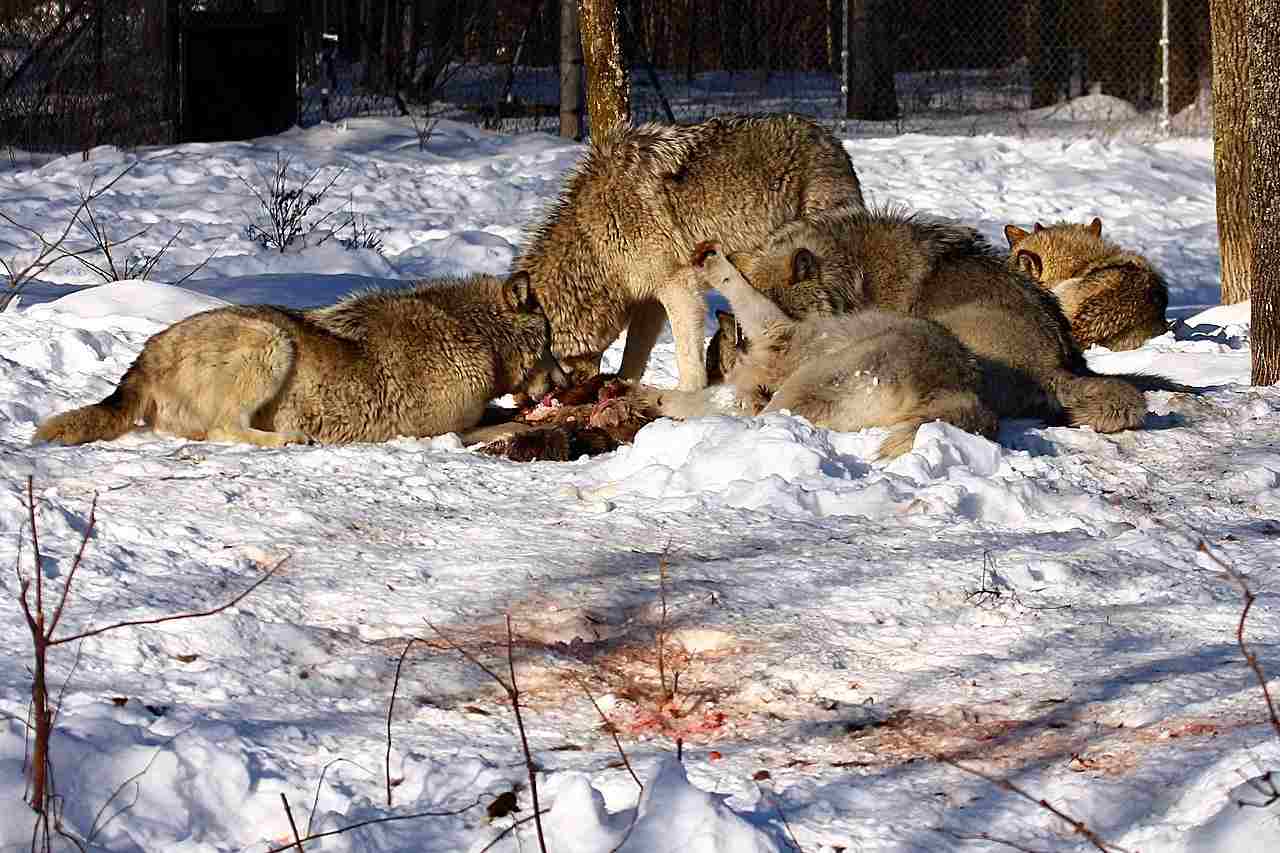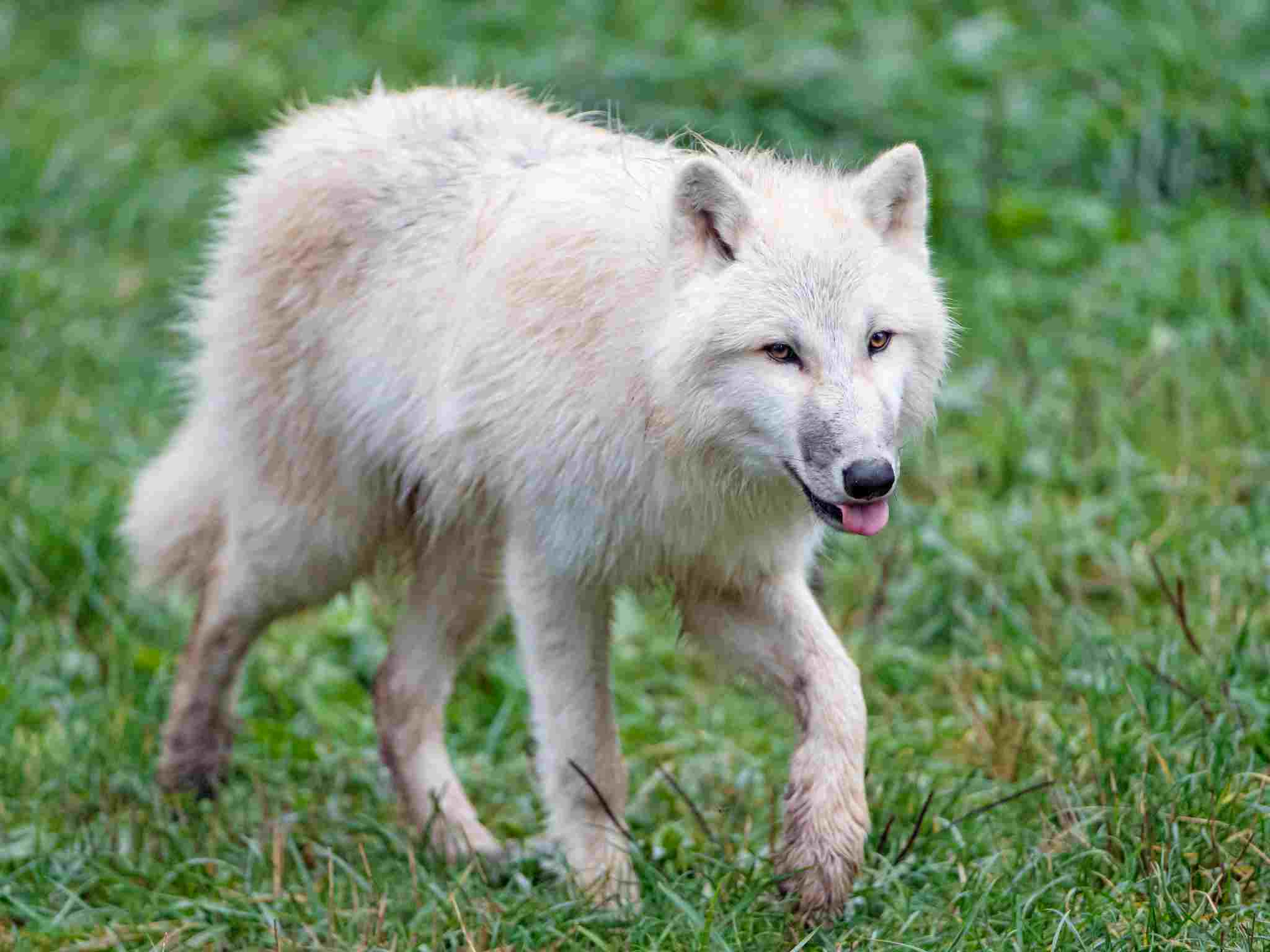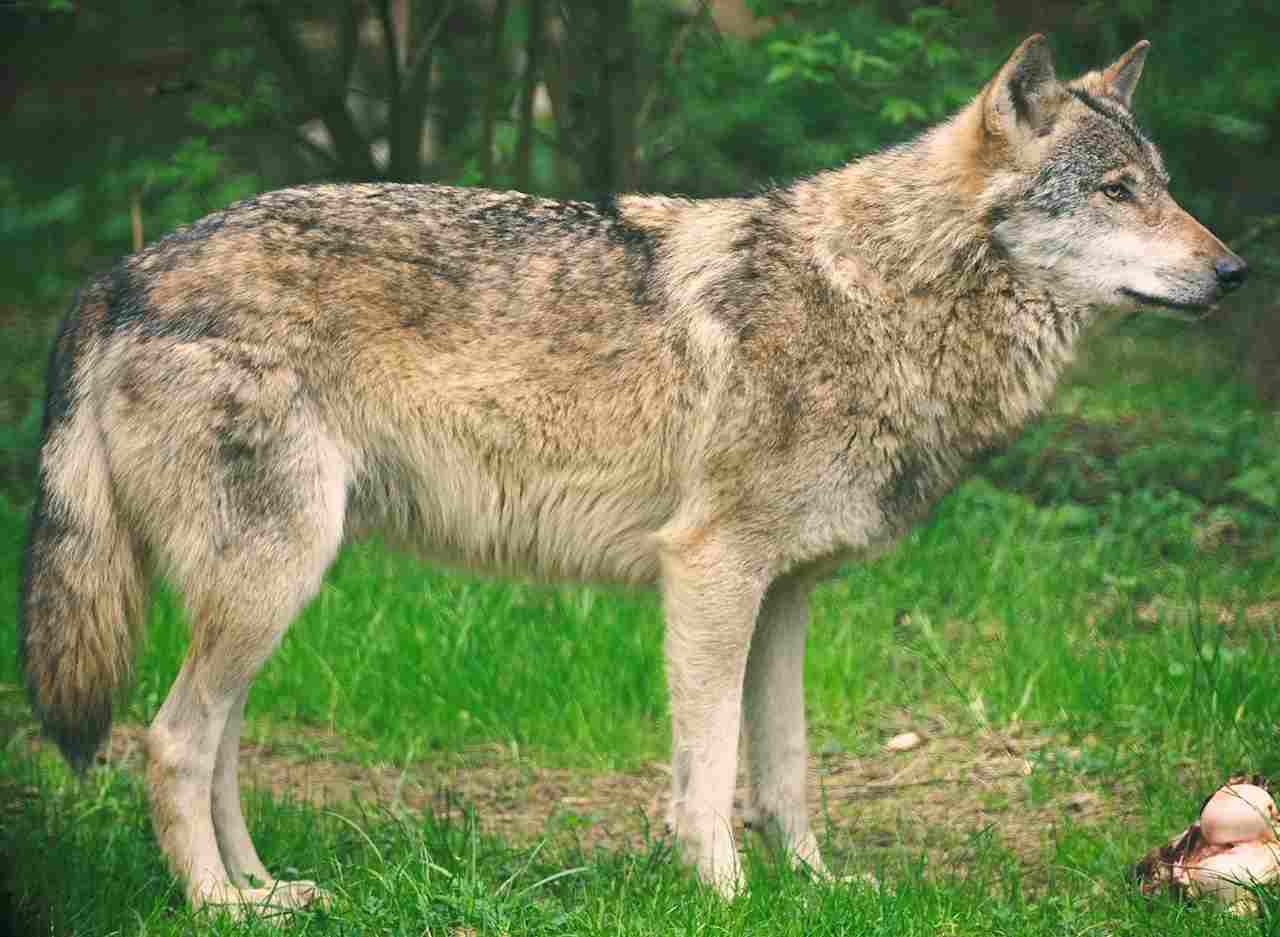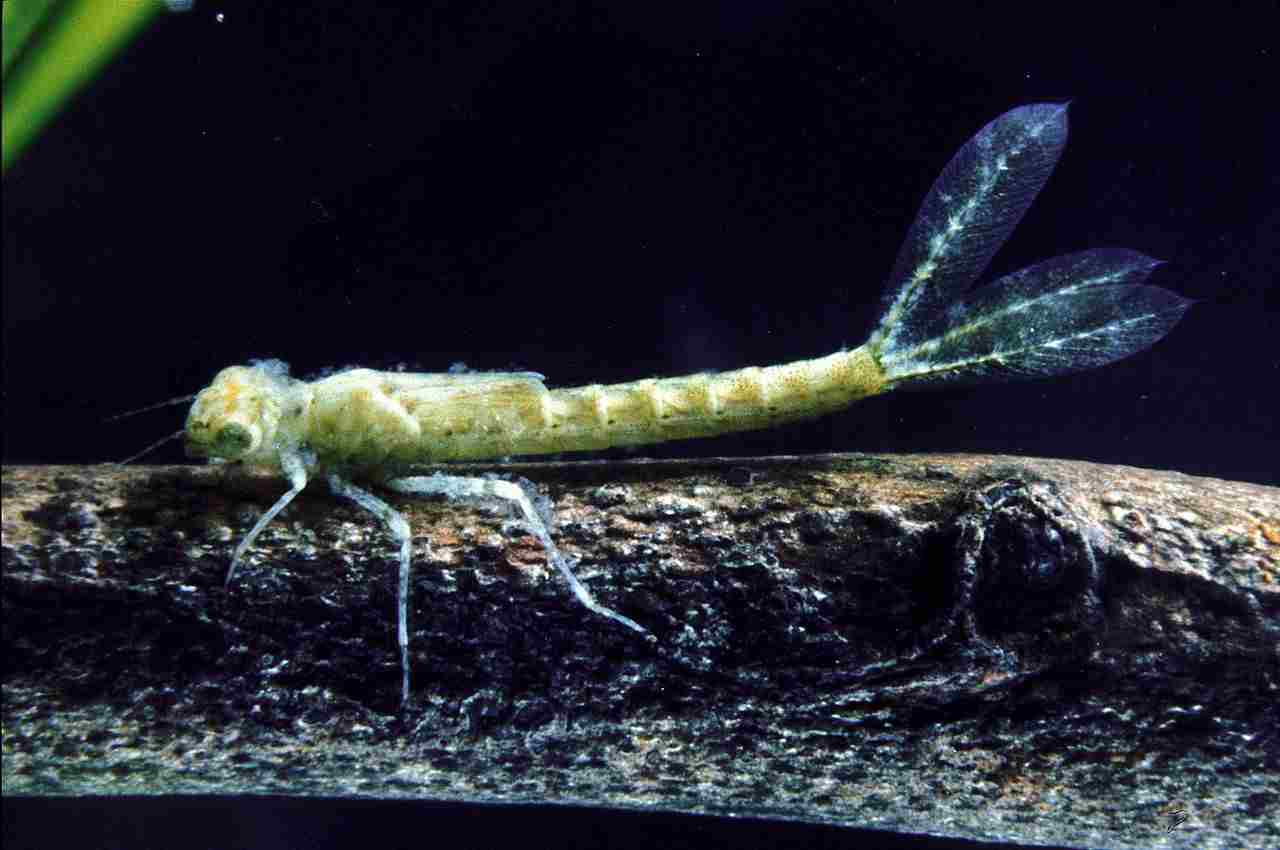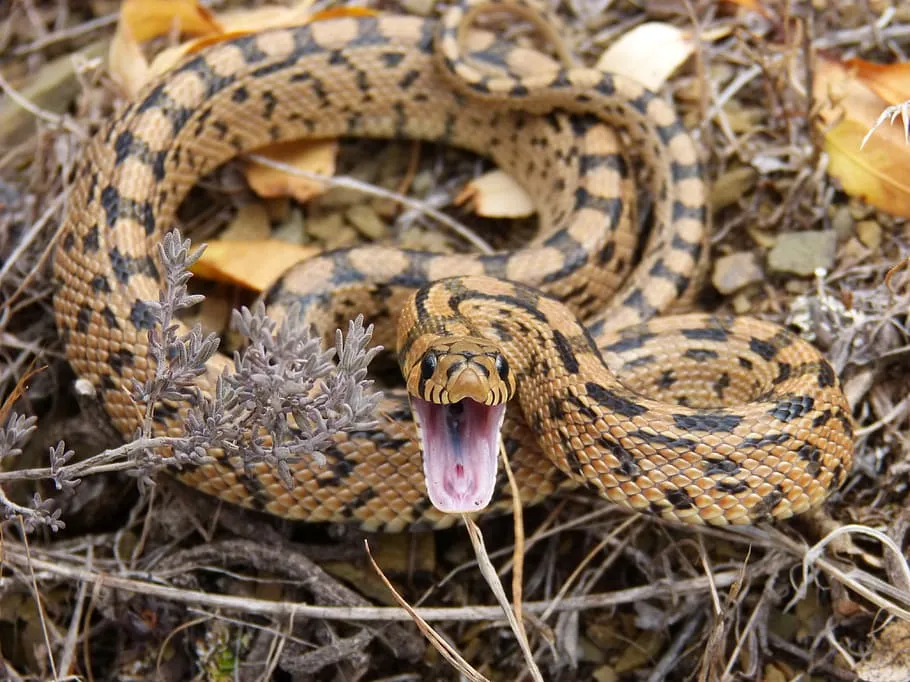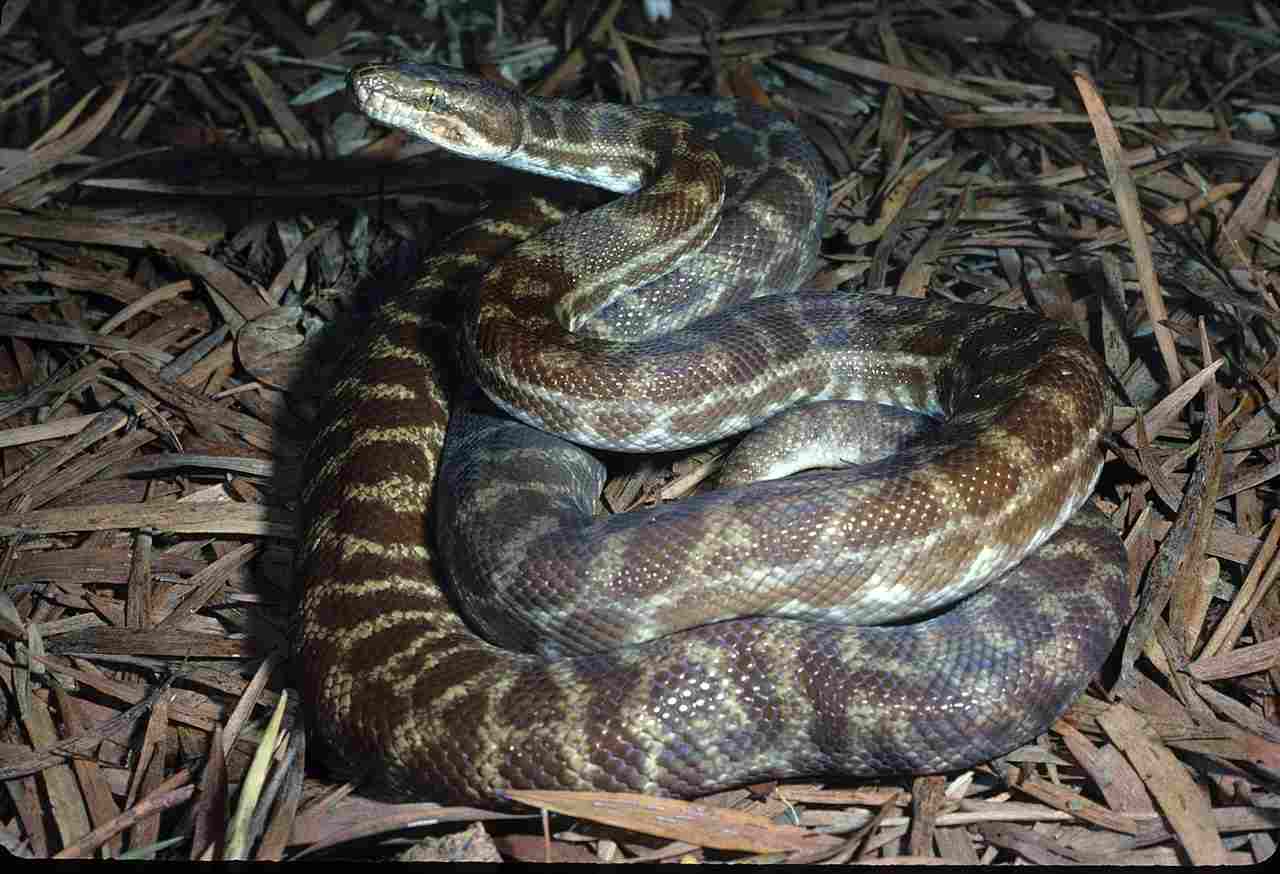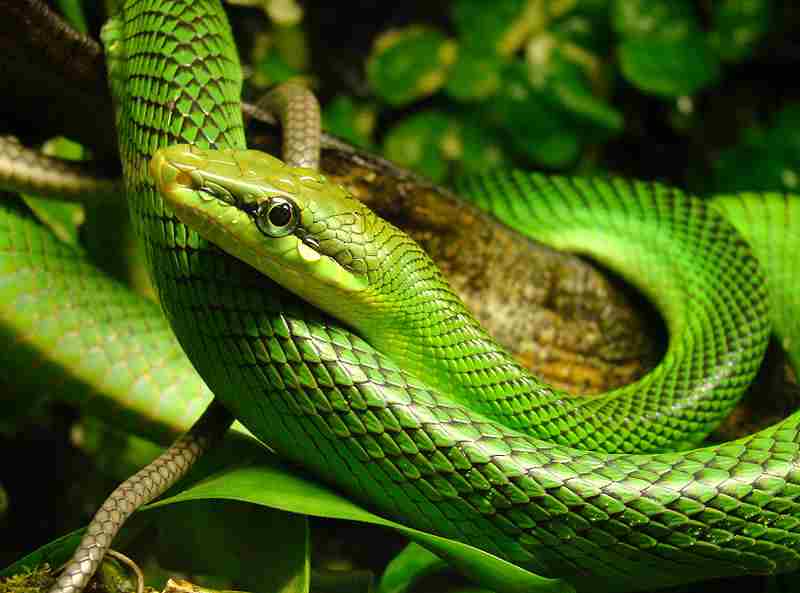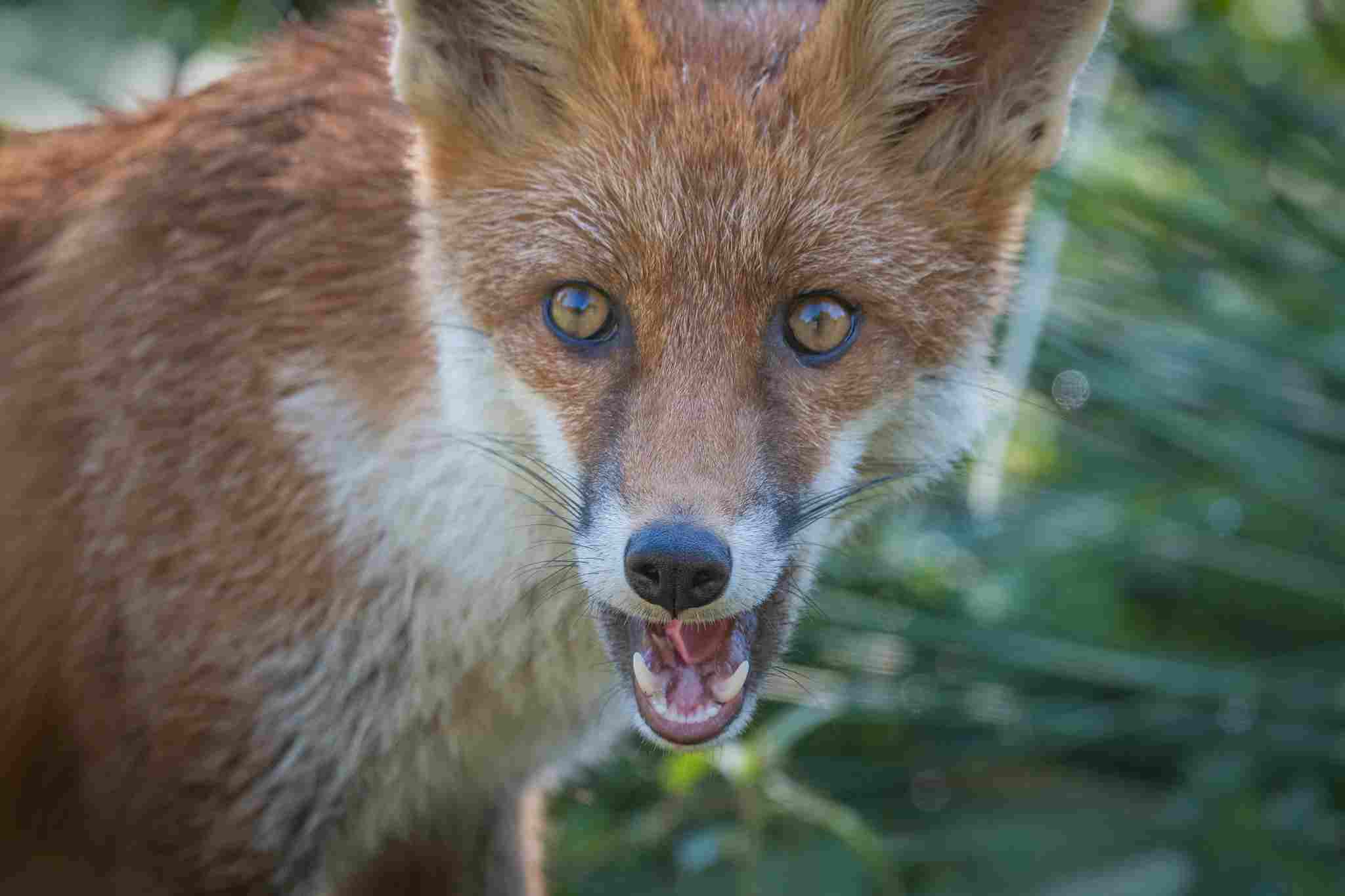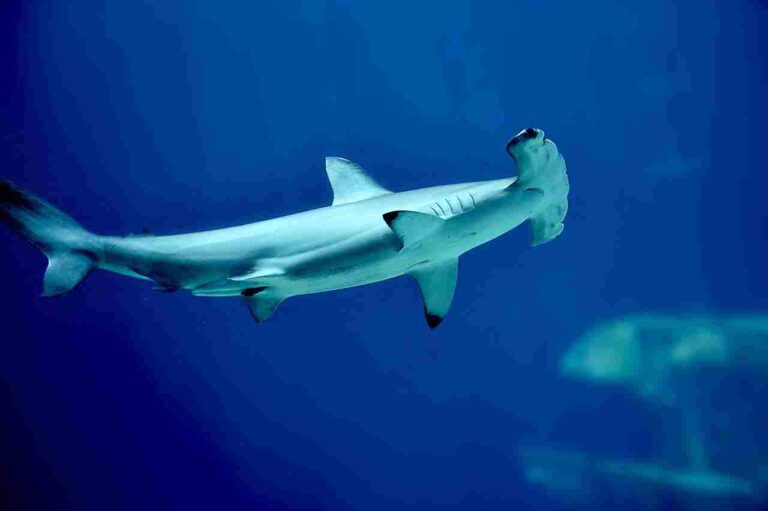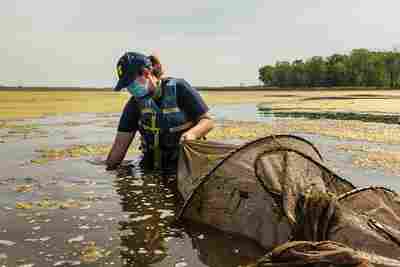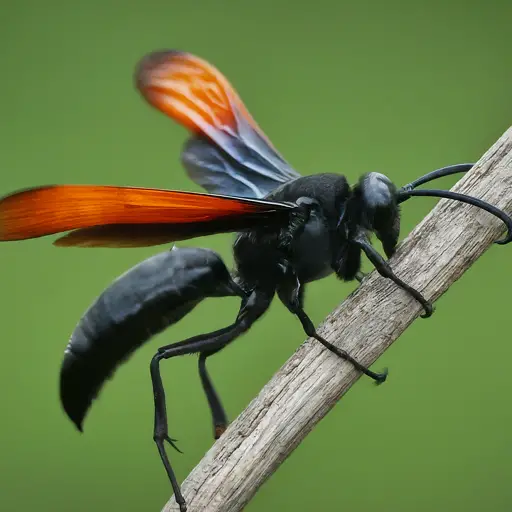9+ Predators In Maryland And Their Characteristics
Examples of predators in Maryland include the black bear, which has a stable population in the western part of the state, and the coyote, which has been expanding its range and can cause conflicts with humans. The state is also home to venomous snakes like the copperhead and timber rattlesnake, which play a role in controlling rodent populations but require cautious handling. Meanwhile, dragonflies are important aerial predators near freshwater bodies, serving as bioindicators of environmental health. The invasive snakehead fish is a significant threat to native ecosystems, prompting ongoing containment efforts.
1. Wolf
Wolves once roamed throughout Maryland, but they have been extinct in the region for over a century due to habitat loss and hunting. These apex predators are part of the Canidae family and are known for their social structure, typically living in packs with a complex hierarchy. While wolves no longer inhabit Maryland’s forests, their historical presence shaped the region’s ecosystem, influencing the behavior and population of prey species.
In their prime, wolves played a critical role in maintaining the balance of the ecosystem by controlling herbivore populations and promoting biodiversity. Their absence has led to significant changes in the landscape and animal behavior. Conservationists have long debated the potential reintroduction of wolves to the eastern United States, recognizing the benefits they bring to the environment. However, given the dense human population and land use in Maryland, the reintroduction of wolves is unlikely to occur in the near future.
2. Mountain Lion
Mountain lions, also known as cougars or pumas, are large solitary cats that once roamed the eastern United States, including Maryland. These elusive predators prefer dense forests and mountainous regions where they can ambush their prey, typically deer or smaller mammals. Due to hunting and habitat loss, mountain lions have been absent from Maryland for many decades, with their last confirmed sightings occurring in the early 1900s. Despite occasional reports of sightings, there is no substantial evidence that mountain lions have made a return to the state.
Their historic presence in Maryland played a key role in maintaining the ecosystem’s health, keeping prey populations in check. Mountain lions are adaptable predators and were an essential part of the food chain. While their reintroduction could offer ecological benefits, the risk to public safety and livestock has made this prospect unlikely. Conservation efforts focus on preserving the species in areas where they still exist, like the western United States, rather than attempting to reintroduce them to regions like Maryland.
3. Black Bear
Black bears are the most common bear species in North America and have a stable population in Maryland’s western regions, such as Garrett and Allegany counties. These omnivorous animals are highly adaptable, with a diet that includes fruits, nuts, small mammals, and carrion. Black bears have experienced a resurgence in Maryland due to conservation efforts and hunting restrictions, contributing to a healthier and more diverse ecosystem.
Despite their increasing numbers, black bears are not typically aggressive toward humans unless provoked or threatened. However, their presence near populated areas can lead to conflicts, especially when they search for food in residential trash bins or campsites. Authorities in Maryland have established protocols to manage black bear encounters and minimize conflicts, including public education and controlled hunting seasons to maintain a balanced population.
4. Dragonfly
Dragonflies are agile aerial predators commonly found near freshwater bodies in Maryland, such as rivers, lakes, and marshes. With their excellent eyesight and impressive flying skills, dragonflies are efficient at catching their prey mid-air, which often includes mosquitoes, flies, and other small insects. These beneficial insects contribute to natural pest control and are a vital part of the ecosystem, maintaining a balance among insect populations.
In addition to their ecological role, dragonflies are also bioindicators, meaning their presence indicates a healthy environment. As sensitive creatures, they can reflect changes in water quality and habitat conditions, making them valuable for monitoring the health of Maryland’s wetlands and water bodies. Conservation efforts focus on preserving their natural habitats to ensure these predators continue to thrive.
5. Snakehead Fish
The snakehead fish is an invasive species in Maryland, particularly in the Chesapeake Bay watershed. Native to Asia and Africa, this predatory fish poses a significant threat to local ecosystems due to its aggressive behavior and rapid reproduction. Snakeheads prey on native fish, amphibians, and invertebrates, disrupting food webs and competing with local species for resources. Their ability to move across land for short distances adds to their invasive potential, making containment and eradication challenging.
Authorities in Maryland have implemented measures to control the snakehead population, including public awareness campaigns, fishing tournaments, and legal incentives to catch and report these fish. While these efforts have had some success in reducing their numbers, snakeheads remain a persistent threat to Maryland’s aquatic ecosystems. The fight against their spread continues, with ongoing monitoring and research aimed at protecting native species.
6. Coyote
Coyotes are adaptable canines that have expanded their range across North America, including Maryland. Known for their cunning and resourcefulness, coyotes can thrive in various habitats, from rural farmlands to suburban areas. They primarily hunt small mammals, like rabbits and rodents, but will also scavenge for food or prey on livestock and pets, leading to potential conflicts with humans.
In Maryland, coyotes are relatively new arrivals, with sightings becoming more common in recent years. Wildlife officials monitor their population and provide guidelines for residents on how to coexist with these predators. Measures include securing trash cans, keeping pets indoors at night, and avoiding intentional feeding. Despite their reputation, coyotes play a valuable role in controlling populations of smaller animals, contributing to ecological balance.
7. Black Widow
Black widow spiders are venomous arachnids found in Maryland, typically in dark, undisturbed areas like woodpiles, sheds, and crawl spaces. Recognized by their glossy black bodies and distinctive red hourglass marking, these spiders are often feared for their potent venom. Despite their dangerous reputation, black widows are generally not aggressive and will bite only when threatened or disturbed.
In Maryland, black widow bites are rare, and cases of severe reactions are even rarer. However, it’s essential to exercise caution when working in areas where these spiders may be present. Proper attire, such as gloves and long sleeves, can help prevent accidental bites. Although the venom can cause pain and other symptoms, medical treatment is usually effective, and fatalities are extremely rare. Conservation efforts focus on educating the public about the importance of these predators in controlling insect populations and reducing unwarranted fear.
8. Timber Rattlesnake
The timber rattlesnake is a venomous snake found in Maryland’s forests and rocky hillsides, particularly in the western part of the state. With its distinctive rattle and varying coloration, this snake plays a vital role in controlling rodent populations. Despite its venomous nature, the timber rattlesnake is generally shy and prefers to avoid human interaction. It will only strike if it feels threatened or cornered.
In Maryland, the timber rattlesnake is considered a species of conservation concern due to habitat loss and persecution. Conservation efforts aim to protect their natural habitats and raise public awareness about their ecological role. Encounters with humans are infrequent, but those living in snake-prone areas are advised to take precautions, such as watching where they step and avoiding handling these snakes. By protecting timber rattlesnakes, Maryland can maintain a balanced ecosystem while ensuring public safety.
9. Copperhead
The copperhead is another venomous snake native to Maryland, recognized by its coppery-brown coloration and distinct hourglass-shaped bands. These snakes are commonly found in wooded areas, rocky outcrops, and near water sources. Like the timber rattlesnake, copperheads are an important part of the ecosystem, preying on small rodents and helping control their populations. Although venomous, copperheads are not typically aggressive and prefer to avoid human contact.
In Maryland, copperhead bites are rare, but they can occur if the snake is accidentally stepped on or provoked. Medical treatment is essential in case of a bite, but fatalities are extremely rare. To minimize the risk of encounters, residents are advised to be cautious in snake-prone areas, especially during warm weather when copperheads are more active. Conservation efforts focus on preserving their natural habitats and educating the public about their role in the ecosystem, emphasizing the need for coexistence.
10. Bobcat
Bobcats are medium-sized wildcats native to Maryland, primarily found in the western part of the state. They are solitary predators known for their tufted ears and short, bobbed tails, preying on small mammals, birds, and occasionally deer. Bobcats play an important role in the ecosystem by regulating prey populations and contributing to biodiversity. Due to their elusive nature, bobcats are rarely seen, making them a mysterious and intriguing part of Maryland’s wildlife.
In recent years, bobcat populations have shown signs of recovery, thanks to conservation efforts and the protection of their habitats. These predators tend to avoid human contact and are not considered a significant threat to people or livestock. However, as their population grows, encounters with humans may increase. Authorities in Maryland focus on educating the public about bobcats and implementing measures to prevent conflicts, ensuring these predators continue to thrive while minimizing risks to the community.
*Summary
-
Mountain Lion: Extinct in Maryland, played a role in maintaining ecosystem balance; reintroduction unlikely due to public safety concerns.
-
Black Bear: Stable population in western Maryland; omnivorous; conservation efforts have helped increase numbers; occasional conflicts with humans.
-
Dragonfly: Aerial predator near freshwater; controls insect populations; bioindicator for water quality; sensitive to habitat changes.
-
Snakehead Fish: Invasive species in Maryland; threatens native fish populations; aggressive and adaptable; containment efforts are ongoing.
-
Coyote: Adaptable and expanding in Maryland; preys on small mammals; can cause conflicts with humans; plays a role in controlling rodent populations.
-
Black Widow: Venomous spider in dark, undisturbed areas; not aggressive but will bite if threatened; plays a role in controlling insects.
-
Timber Rattlesnake: Venomous snake in western Maryland; controls rodent populations; shy and avoids humans; conservation efforts in place.
-
Copperhead: Venomous snake in Maryland’s wooded areas; controls rodent populations; not typically aggressive; conservation and education efforts ongoing.
-
Bobcat: Medium-sized wildcat in western Maryland; elusive predator that controls prey populations; conservation efforts have led to population recovery.
| Predator | Description |
| Mountain Lion |
Extinct in Maryland; played a role in ecosystem balance; reintroduction unlikely due to public safety concerns.
|
| Black Bear |
Stable population in western Maryland; omnivorous; conservation efforts have increased numbers; occasional conflicts with humans.
|
| Dragonfly |
Aerial predator near freshwater; controls insect populations; bioindicator for water quality; sensitive to habitat changes.
|
| Snakehead Fish |
Invasive species in Maryland; threatens native fish populations; aggressive and adaptable; containment efforts are ongoing.
|
| Coyote |
Adaptable and expanding in Maryland; preys on small mammals; can cause conflicts with humans; plays a role in controlling rodent populations.
|
| Black Widow |
Venomous spider in dark, undisturbed areas; not aggressive but will bite if threatened; controls insects.
|
| Timber Rattlesnake |
Venomous snake in western Maryland; controls rodent populations; shy and avoids humans; conservation efforts in place.
|
| Copperhead |
Venomous snake in Maryland’s wooded areas; controls rodent populations; not typically aggressive; conservation and education efforts ongoing.
|
| Bobcat |
Medium-sized wildcat in western Maryland; elusive predator that controls prey populations; conservation efforts have led to population recovery.
|
